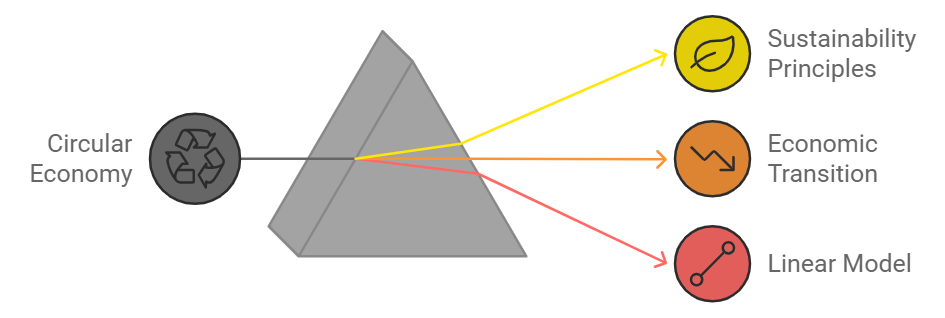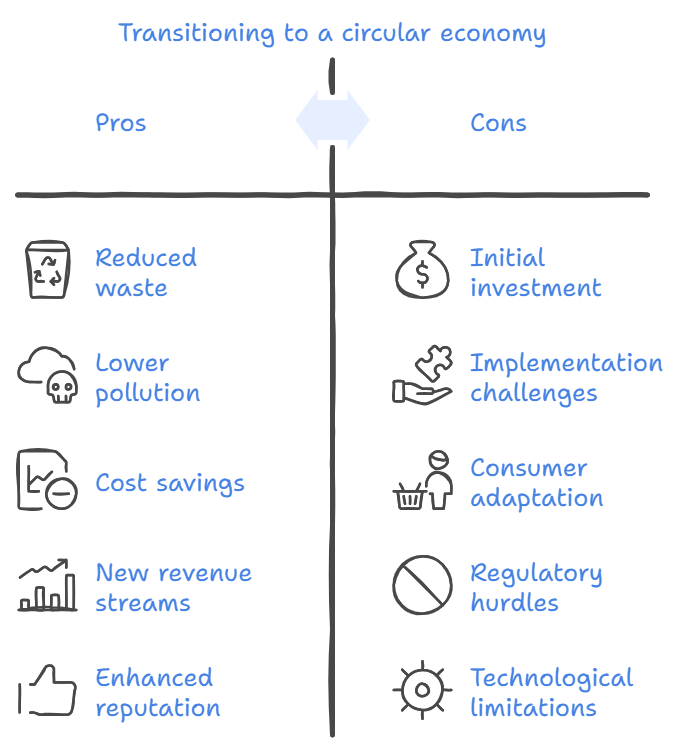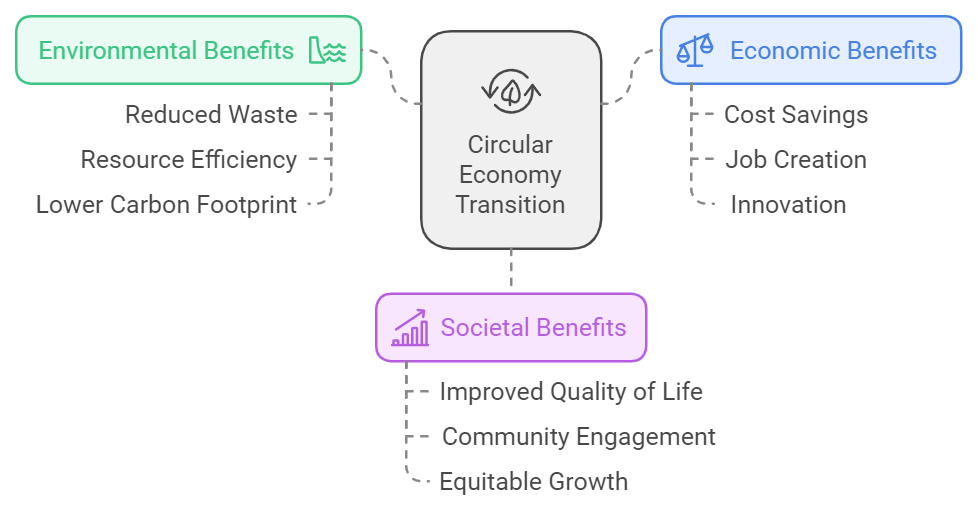The circular economy represents a fundamental shift away from the linear “take-make-waste” model that has dominated our economic landscape for centuries. This document explores the principles of the circular economy, its significance in promoting sustainability, and the various strategies that can be employed to transition from a linear to a circular economic model.

Key Principles of the Circular Economy
- Design for Longevity: Products should be designed to last longer, reducing the need for frequent replacements and minimizing waste.
- Resource Recovery: Emphasizing the importance of recycling and reusing materials to keep resources in use for as long as possible.
- Systems Thinking: Understanding the interconnectedness of various components within the economy and how changes in one area can impact others.
- Regenerative Practices: Focusing on restoring natural systems and enhancing biodiversity, rather than depleting resources.
Significance of the Circular Economy
The shift to a circular economy is crucial for several reasons:
- Environmental Impact: It helps reduce waste and pollution, leading to a healthier planet.
- Economic Benefits: By maximizing resource efficiency, businesses can reduce costs and create new revenue streams.
- Social Responsibility: Promoting sustainable practices can enhance a company’s reputation and foster consumer loyalty.

Strategies for Transitioning to a Circular Economy
- Innovative Business Models: Companies can adopt models such as product-as-a-service, where consumers pay for the use of a product rather than ownership.
- Collaboration and Partnerships: Engaging with stakeholders across the supply chain to create shared value and optimize resource use.
- Investment in Technology: Leveraging advancements in technology to improve recycling processes and develop sustainable materials.
- Consumer Education: Raising awareness about the benefits of circular practices and encouraging responsible consumption.
Conclusion
The transition to a circular economy is not just a trend but a necessary evolution in how we approach production and consumption. By embracing the principles of the circular economy, we can create a more sustainable future that benefits the environment, economy, and society as a whole.

I have been exploring for a little for any high-quality articles or blog posts in this sort of space . Exploring in Yahoo I finally stumbled upon this website. Reading this info So i¦m glad to exhibit that I have a very just right uncanny feeling I came upon just what I needed. I such a lot without a doubt will make sure to don¦t omit this web site and give it a look regularly.
Thank you for taking the time to share this. It truly made my day! I’m so glad your search led you here and that you found what you were looking for. There’s no better compliment than knowing the content ‘clicked’ just when you needed it. Your support and intention to come back mean everything to me!
I’ll keep working hard to make sure this space remains a trusted resource for you. If there’s ever a topic you’d love to see covered in more depth, feel free to shout. Welcome to the blog, and I hope you enjoy what’s ahead! 😊
Wonderful beat ! I would like to apprentice even as you amend your website, how can i subscribe for a weblog website? The account helped me a appropriate deal. I have been a little bit familiar of this your broadcast provided vibrant clear concept
Wonderful goods from you, man. I have take into accout your stuff previous to and you’re just too excellent. I really like what you’ve got here, really like what you’re saying and the way in which during which you say it. You’re making it entertaining and you still care for to stay it smart. I cant wait to read far more from you. That is really a great web site.
I appreciate, cause I found just what I was looking for. You’ve ended my four day long hunt! God Bless you man. Have a nice day. Bye